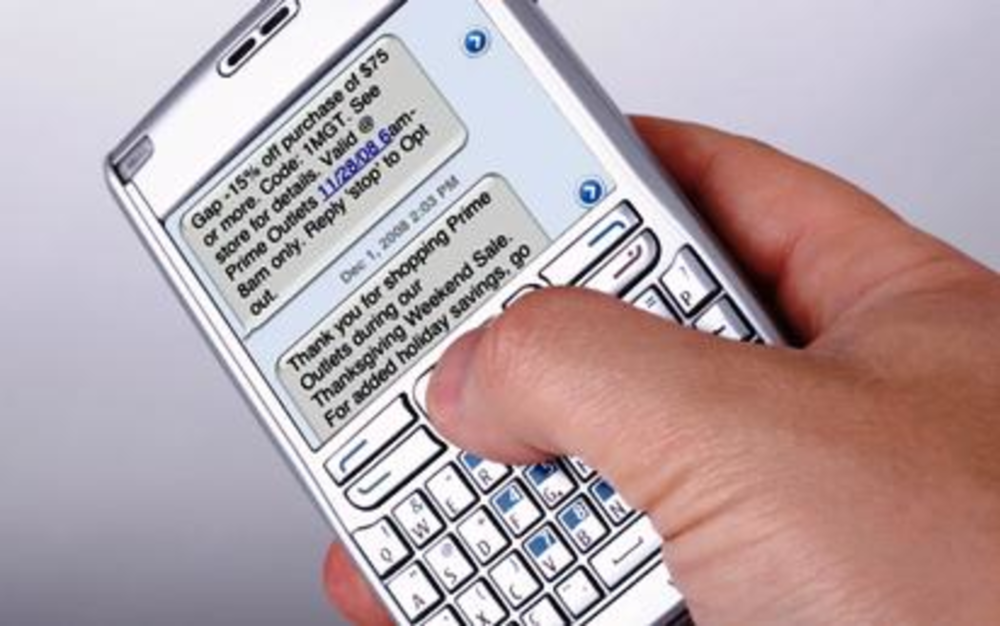While the mobile Web is a hot topic among US marketers these days, text messaging is not going anywhere. After all, now-President Barack Obama’s vice presidential pick, Joe Biden, was announced by text message to an estimated 2.9 million mobile users.
In fact, according to the Mobile Advertising Report published by Limbo and GFK/NOP research, text messaging (SMS) remains the dominant data service used by US consumers. In the third quarter of 2008, more than 160 million consumers used text messaging, more than in 2007. So it is no surprise that texting campaigns are more ubiquitous for marketers across sectors.
“Text campaigns are so appropriate today for marketers with tight budgets who are looking at getting back to basics,” says Riccardo Zane, president of Agency.com New York. “Everyone needs to sell, maintain a brand position and deliver ROI. Mobile offers a cutting edge opportunity to drive a better bang for a marketer’s buck. And texting offers immediacy.”
These days, text is often used in conjunction with other channels such as the Web or in-store signage. For example, Prime Retail, one of the nation’s largest developers of outlet malls, recently partnered with Omnicom’s mobile agency Ipsh to complete its first text campaign combined these other channels.
The retail developer used text messaging to promote its “Midnight Madness Pajama Jam,” a special offers promotion that ran on Black Friday from midnight through 8am. The text campaign was promoted by e-mail, direct mail and through in-store and in-mall signage.
Consumers were able to opt in for special blitz offers from participating merchants, which included Polo Ralph Lauren, Michael Kors, Lucky Jeans, Kate Spade, Neiman Marcus Last Call, Hugo Boss, Nike, Saks Fifth Avenue Off 5th, Ecko Unlimited, Gap and Banana Republic Factory Stores, at different times throughout the night.
An example of an offer text was “25% off of your entire purchase at Kate Spade from 12am-2am.” The offers gained intensity throughout the night and encouraged shoppers to visit certain stores to redeem specials in real time.
“Text is more timely and has a stronger call-to-action with immediate offers [than other channels],” says Karen Fluharty, SVP of marketing at Prime Retail. “As a consumer, I know that I get something like 15 e-mails a day and that’s great, but it doesn’t have the same demand for attention as a text offer does.”
More than 8,000 people signed up to participate in the campaign — 83% of them opted in on the Web; 17% by in-mall or in-store signage. There was a 32% conversation rate for consumers who opted in and stayed involved in the program start to finish, and an 85% retention after the final message was blasted to the database.
Interestingly, more than 70% of consumers who interacted with the Midnight Madness program did so over Thanksgiving week from the Sunday prior through the Thursday holiday, and 35% of that came from Thanksgiving Day traffic. All of those who opted in for Midnight Madness will be invited back for similar promotions that are slated to run in 2009.
While text messaging campaigns can attract impressive results, there are also challenges inherent to the channel. Limited character space, the need to capture a consumer’s attention with only a few words and the need to be interesting in such a small space can pose issues for marketers.
“It is not rich media — it needs to be specific and text-based,” Zane explains. “Copy doesn’t always attract the attention the way that images can. Because you have limited character space, it usually works best when you can tie it into a WAP site, broader Web experience or something offline.”
For Fox Sports en Español, texting works along with live TV events. The sports broadcasting brand is working with mobile marketing partner 2ergo to run texting campaigns during sports games broadcasts. One of these promotions, during the InterLiga soccer tournament, is sponsored by T-Mobile and is called “Jugador Del Partido” — Spanish for “Player of the Match.”
“These days, advertisers are looking for engaging unique creative messages to reach people and just TV time doesn’t cut it anymore,” says Paul Laureano, senior manager of integrated sales and marketing for Fox Sports en Español. “Text is cheap, it is portable, and it lets you reach people at the moment that they are most passionate, during the game.”
The Fox Sports en Español promotion invites viewers to choose from four nominees in a particular game to be the “player of the match.” The nominees are pictured on screen with each player corresponding to a letter — A, B, C, or D — which participants can text into a short code to enter. At the end of the match, the winning player is announced.
“It’s interactive,” Laureano says of the campaign. “You get people to engage at the moment of passion, and you are talking to people in that moment.”
An average “Player of the Match” promotion brings in about 10,000-20,000 text messages per game. In one recent game between Mexican teams Chivas and America, the promotion even received more than 10,500 text messages in one hour.
As 2009 progresses, with a tight economy and an even bigger demand for marketers to deliver ROI, text campaigns are more appropriate than ever. With more US consumers texting than ever before and the ability for measurable results to tie into other channels, text campaigns are a must-have in ’09, say experts.
“The challenge that I’d put to marketers out there is to test different mobile messages this year,” remarks Zane. “Mobile offers a great test-and-learn opportunity with a great ROI, especially in a limited budget environment.” l







